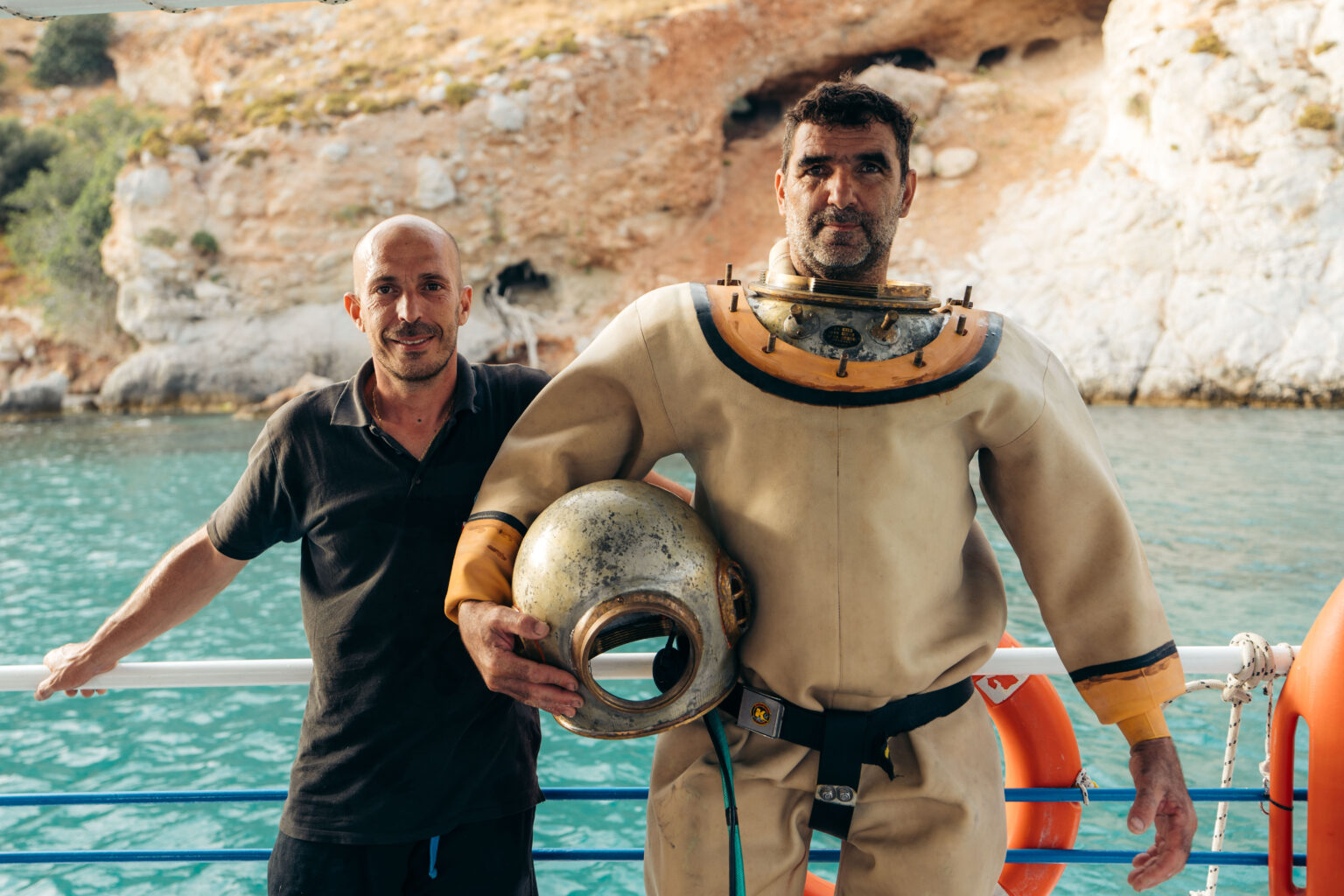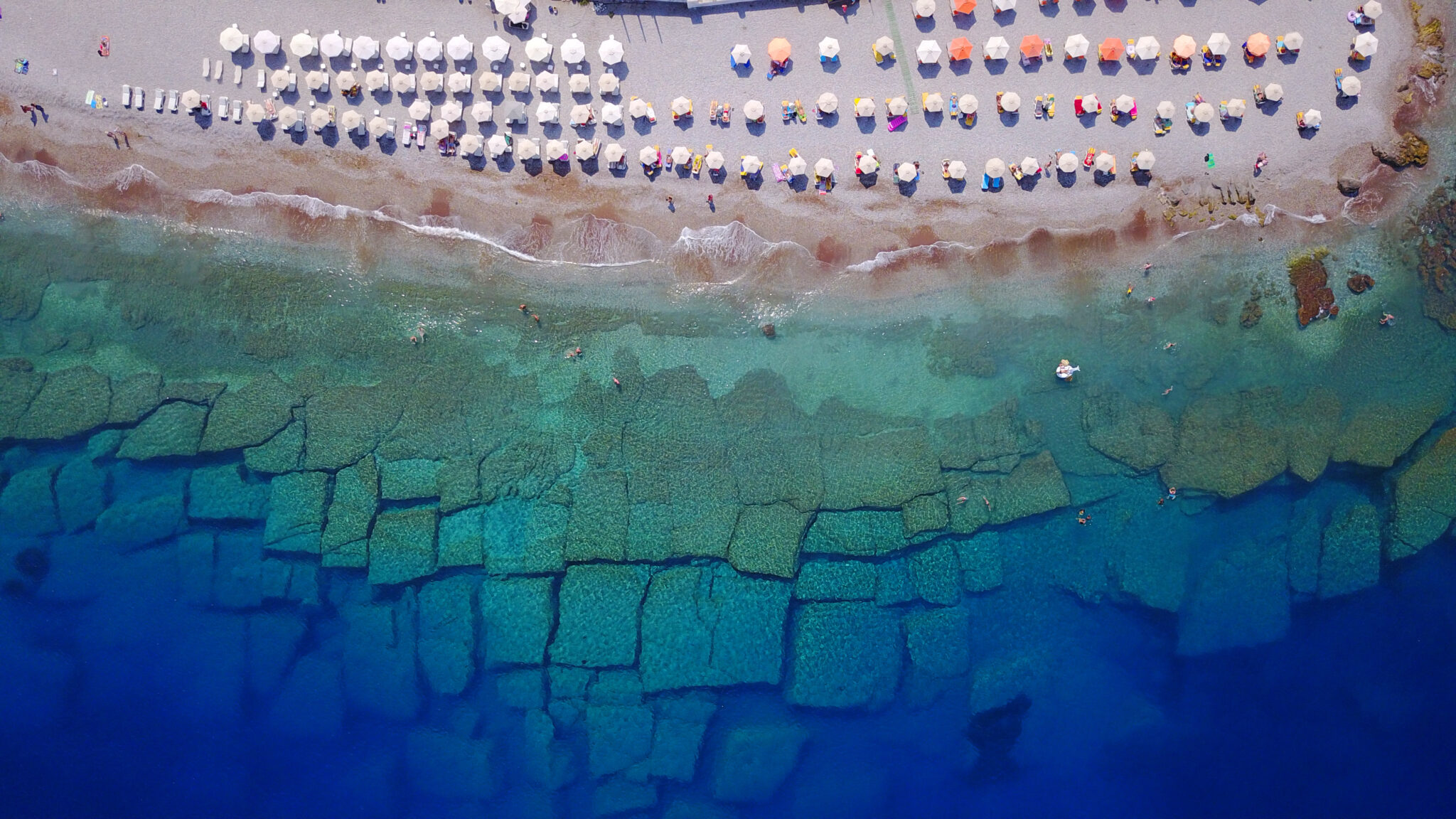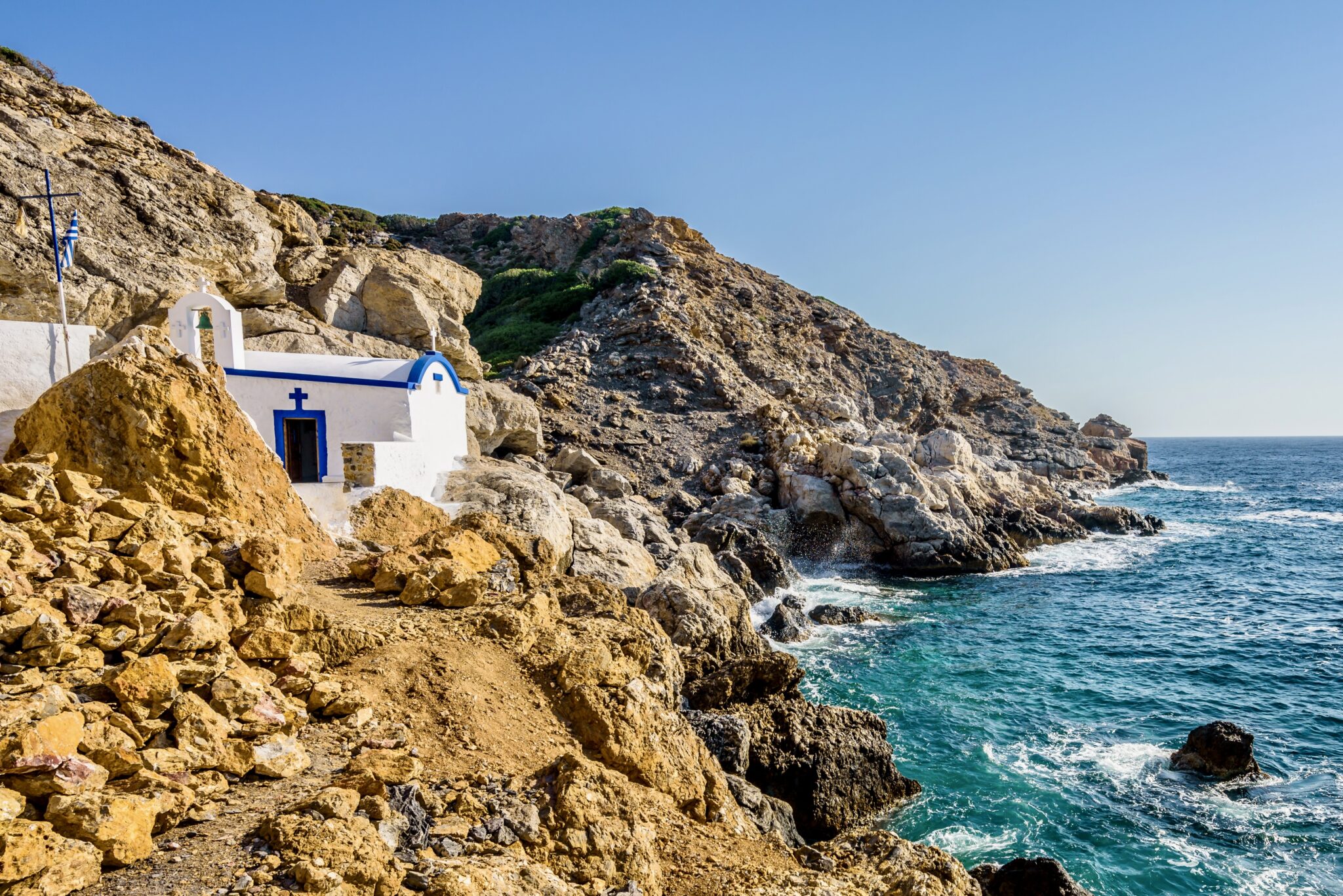From the pioneering sponge divers with their heavy diving suits to today’s professional divers like Dimitris Nystazos and Michalis Koumparos, Kalymnos remains a living museum of diving.
While the tradition of diving with a helmet and suit is strongly tied to the past, it is kept alive through the stories and practices of modern divers. At the same time, advancements in diving technology have opened new horizons, allowing visitors to explore the underwater world with greater safety and comfort.
The History
Imagine walking on the sea floor, breathing normally, and communicating with the surface. This is what the diving helmet, a revolutionary invention that forever changed the world of diving, made possible. The history of the diving helmet began at the heart of the Industrial Revolution. In 1837, Augustus Siebe’s company in England introduced a groundbreaking design: a metal helmet connected to a waterproof suit, supplied with air from the surface. This innovation became the symbol of professional divers, particularly in the sponge-diving industry.
A few years later, Rouquayrol and Denayrouze introduced another revolutionary innovation. Originally designed for rescuing workers from flooded mines, their invention offered something unprecedented: the autonomy of underwater movement. In Greece, the introduction of the diving helmet led to dramatic results. In 1863, Fotis Mastoridis from Symi presented this revolutionary diving method at Symi’s harbor. The promise was great: divers could stay underwater for much longer periods. However, the lack of knowledge led to tragedy.
The statistics are staggering. From 1866 to 1915, there were 10,000 recorded deaths and 20,000 cases of paralysis among diving-helmet users in the sponge-diving islands of the Aegean. During the same period, only 10 deaths occurred among naked divers.
Despite the risks, there were pioneers who dared to advance this technology. Eugenia, the wife of Fotis Mastoridis, known as Kyra Fotena, made history in 1863 when she donned the diving suit and plunged into the harbor of Symi, inspiring hesitant divers. From then on, the diving helmet became known as the “costume” in the world of divers. Today, the diving helmet remains a fundamental tool for professional diving, while lighter versions are also used in recreational diving. Its evolution continues, reminding us how technology can open new horizons, but also how crucial proper training and usage are.
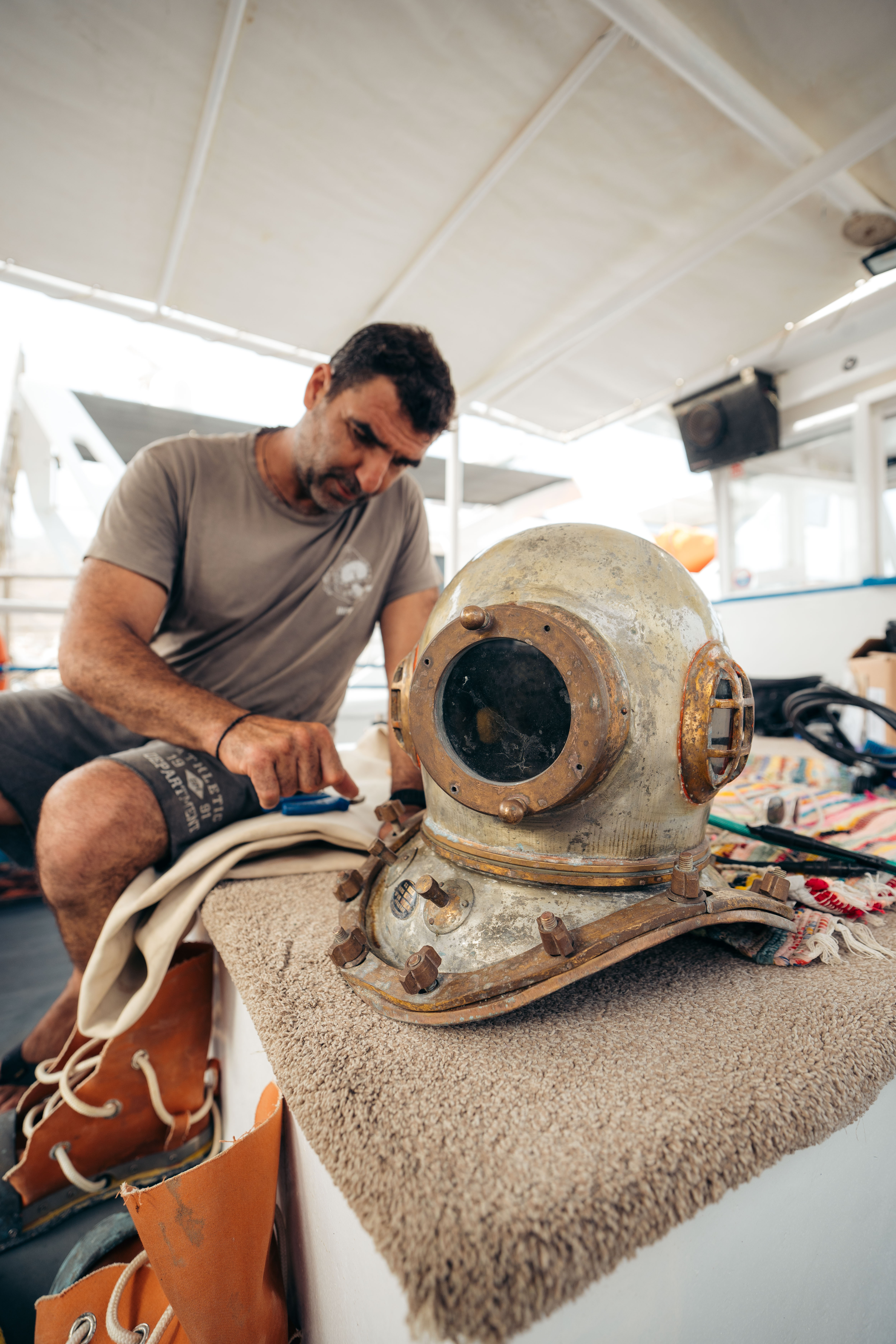
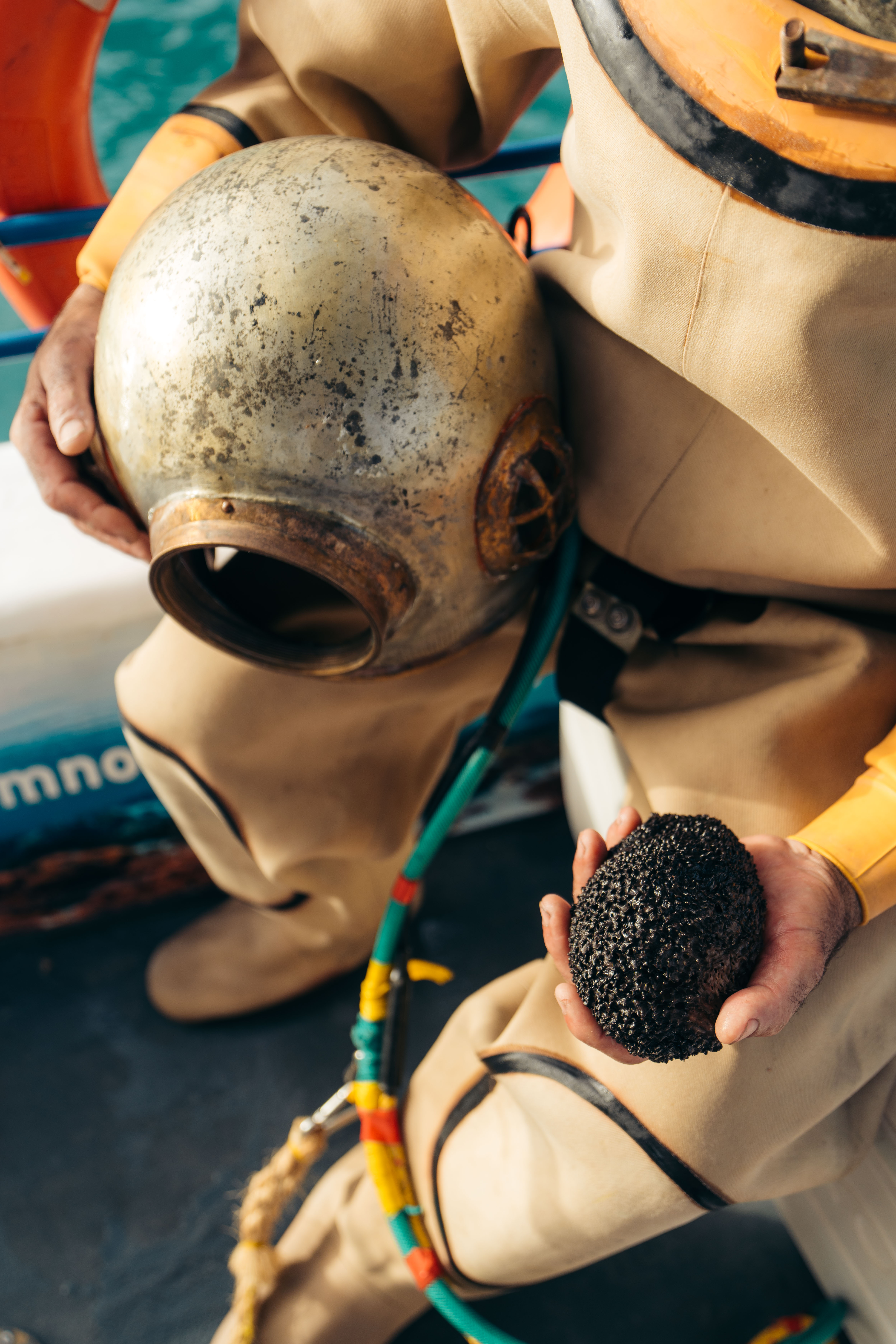
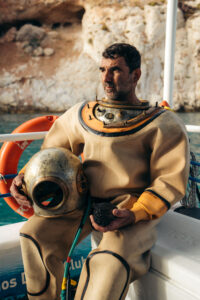
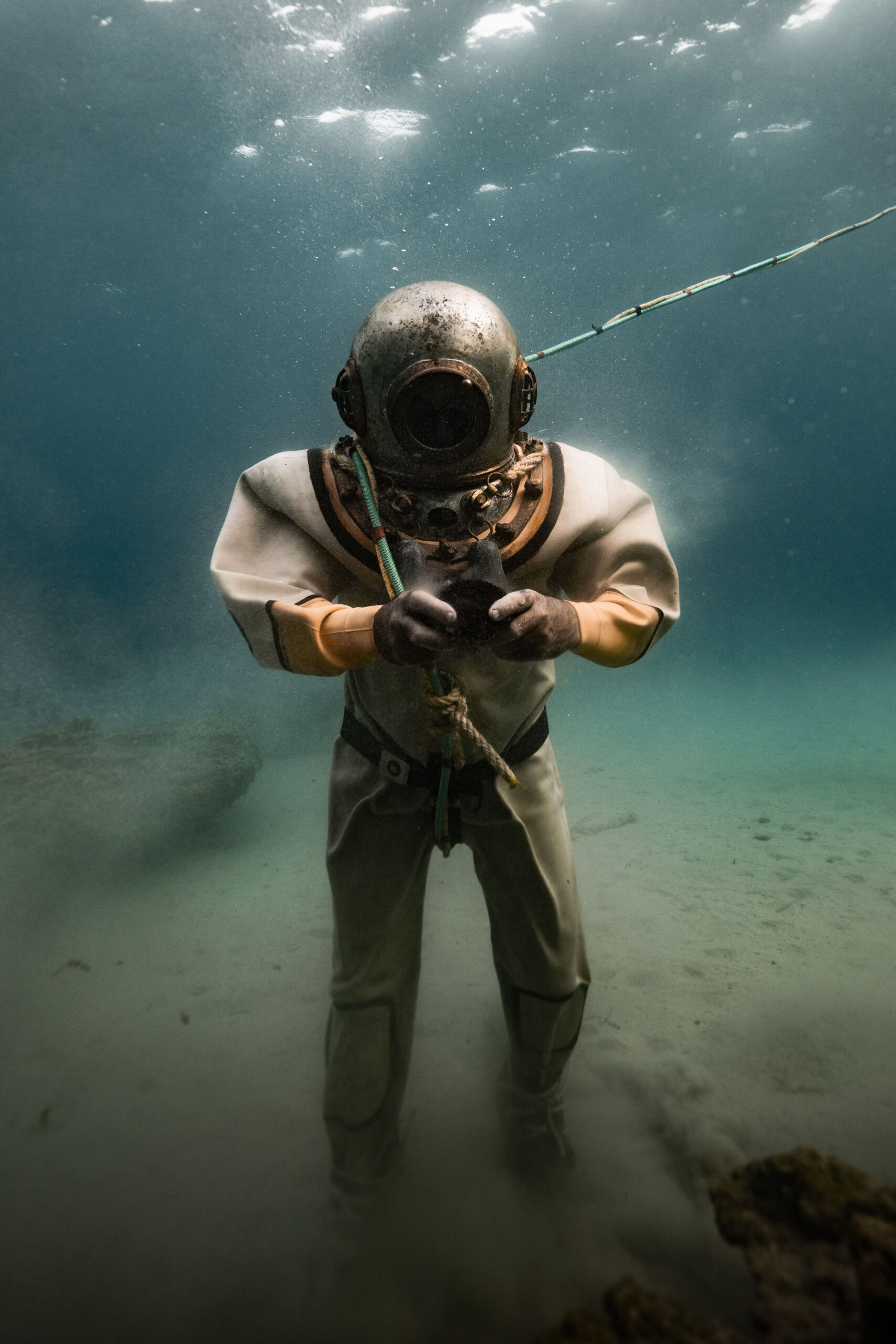
The Modern-Day Divers
Dimitris Nystazos: The Last of the Helmet Divers
Nystazos, owner of the Kalymnos Diving Club, is a living legend in the diving world. As one of the few remaining divers who still uses the traditional diving helmet, he keeps an age-old tradition alive. His extensive experience in professional diving, combined with his boundless passion for the sea, makes him one of the most trusted instructors in the field. Beyond training new divers, he has participated in numerous operations, from salvage missions to shipwreck recoveries, demonstrating his versatile expertise in the underwater world. His company offers visitors to the island the opportunity to explore the depths of the sea.
Michalis Koumparos: The Multifaceted Sea Wolf
Born on the island of divers, Koumparos has the sea in his DNA. As a professional diver and diving instructor, he has developed an impressive range of specialties. From open sea to shipwrecks, and from night dives to underwater photography, he embodies a complete diving personality. Koumparos’ expertise in providing first aid and emergency oxygen adds an extra layer of safety to his training sessions. With his team at “The Kalymnos Experience,” Michalis offers a singular, safe, and enjoyable diving experience to every visitor to the island.
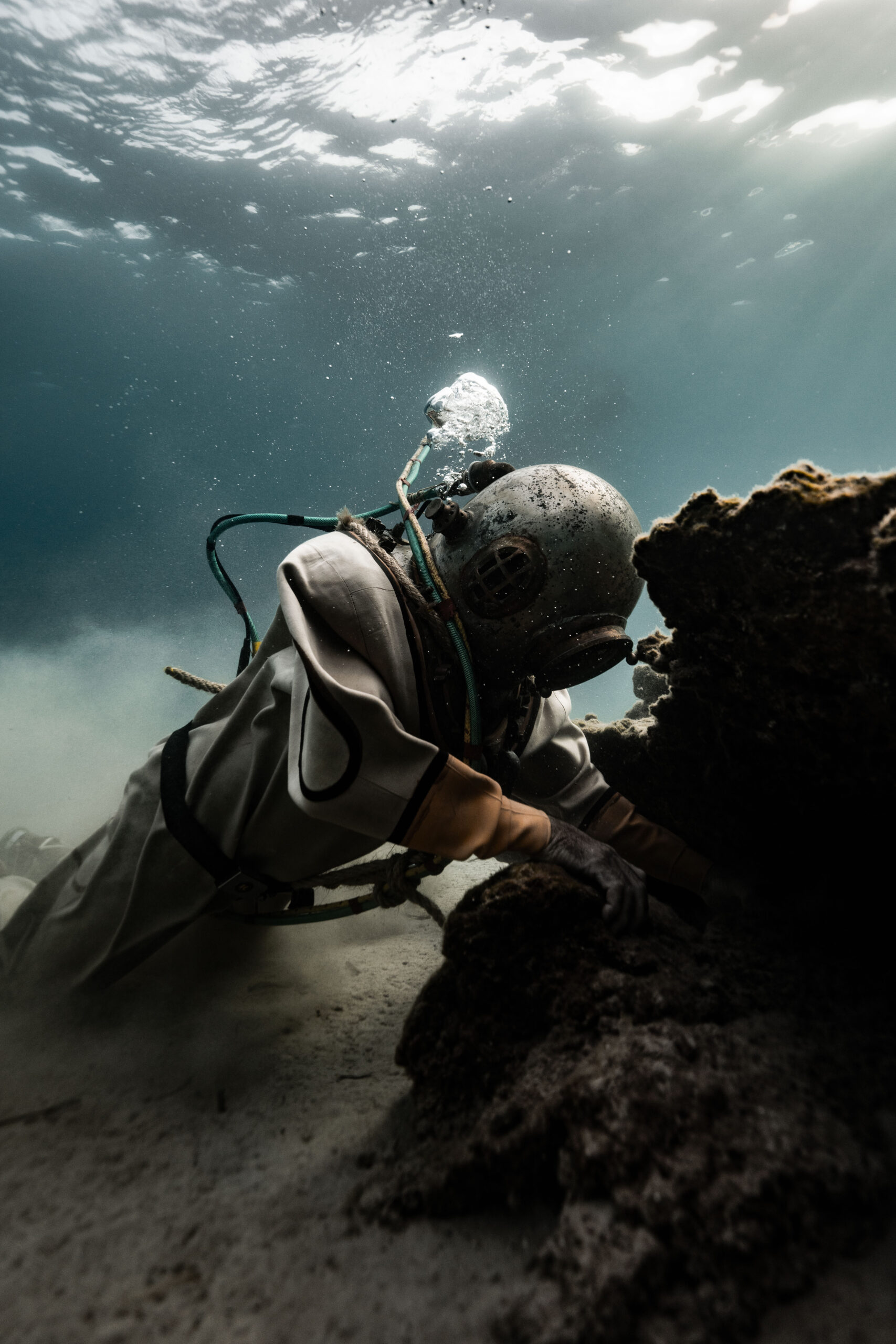
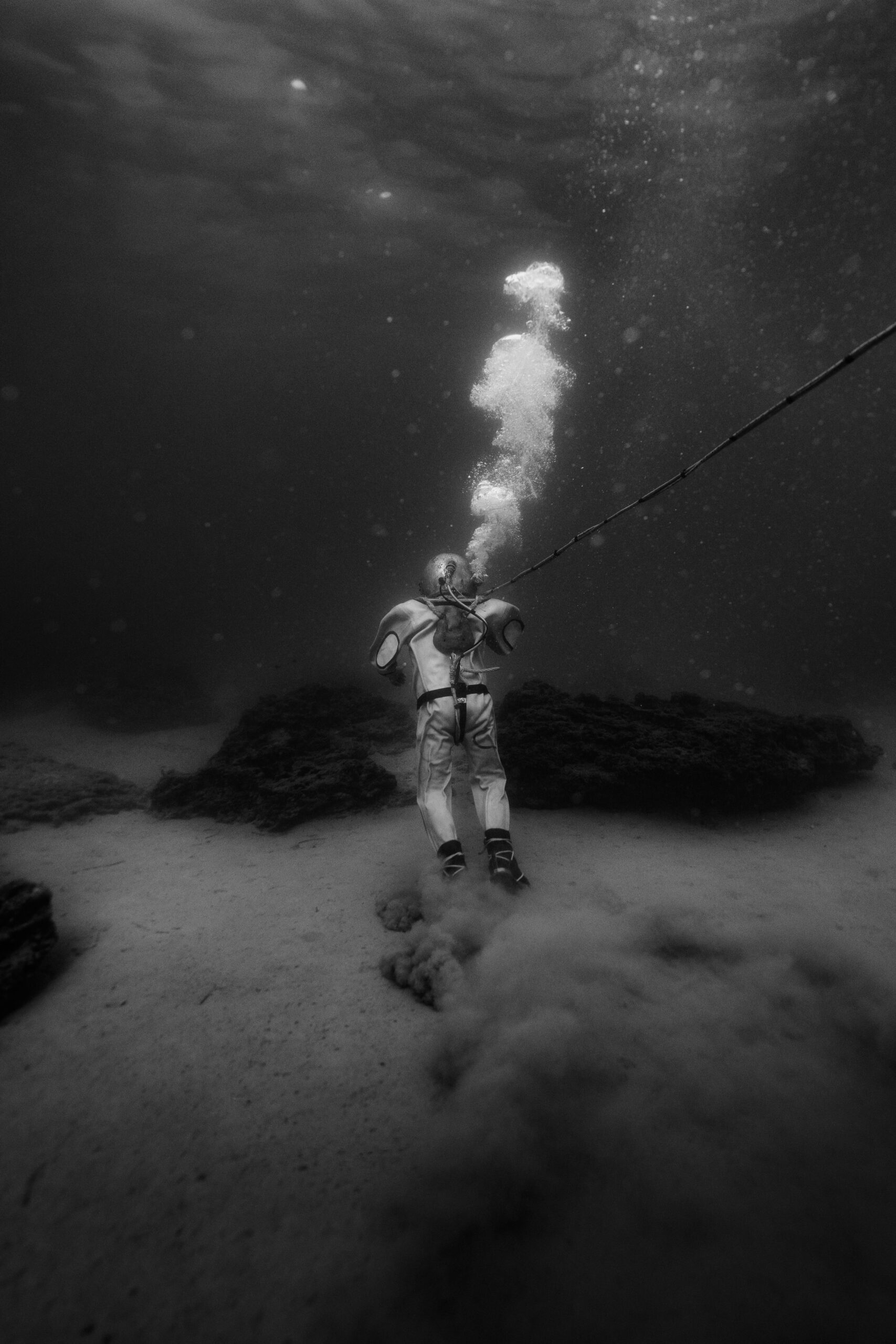
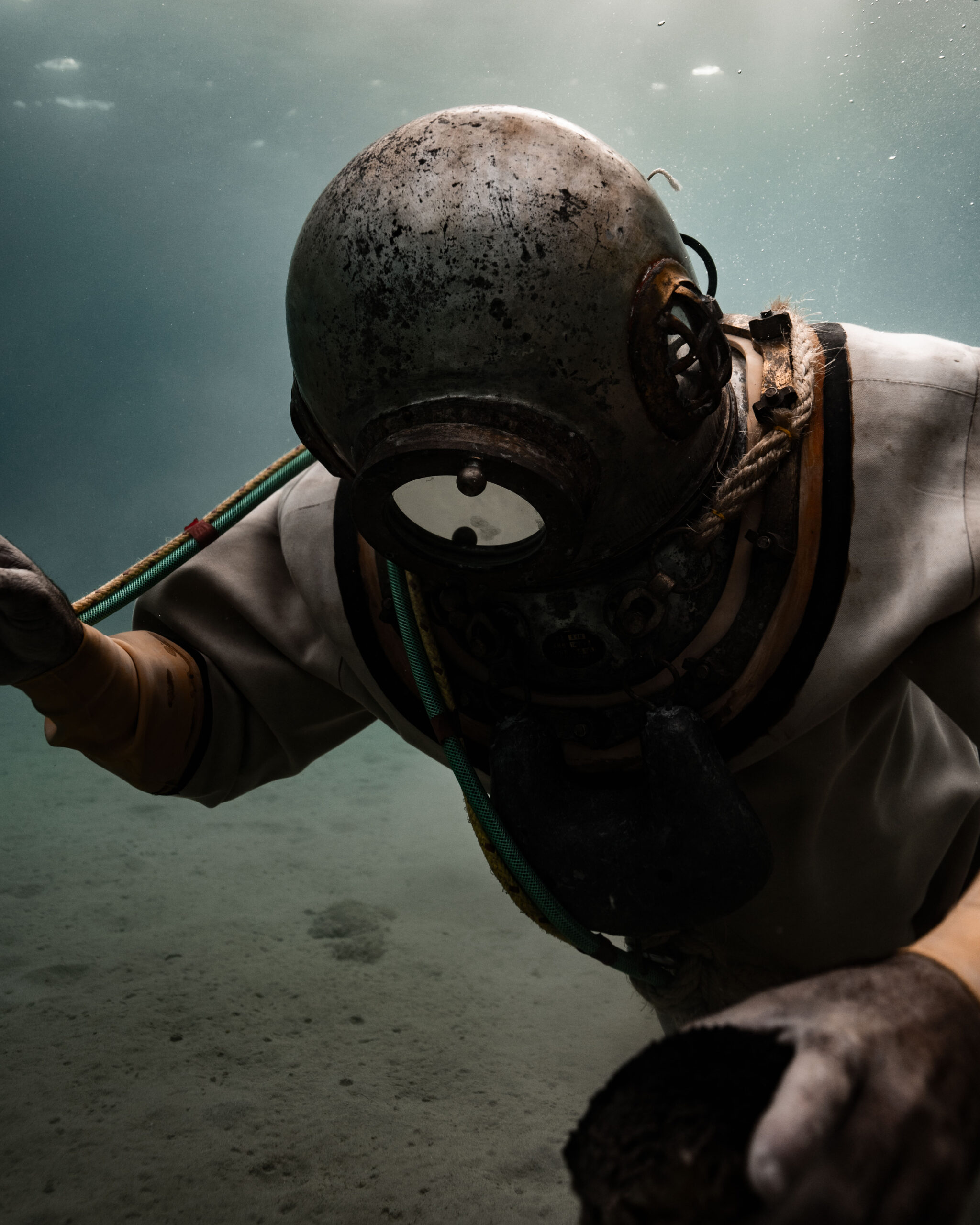
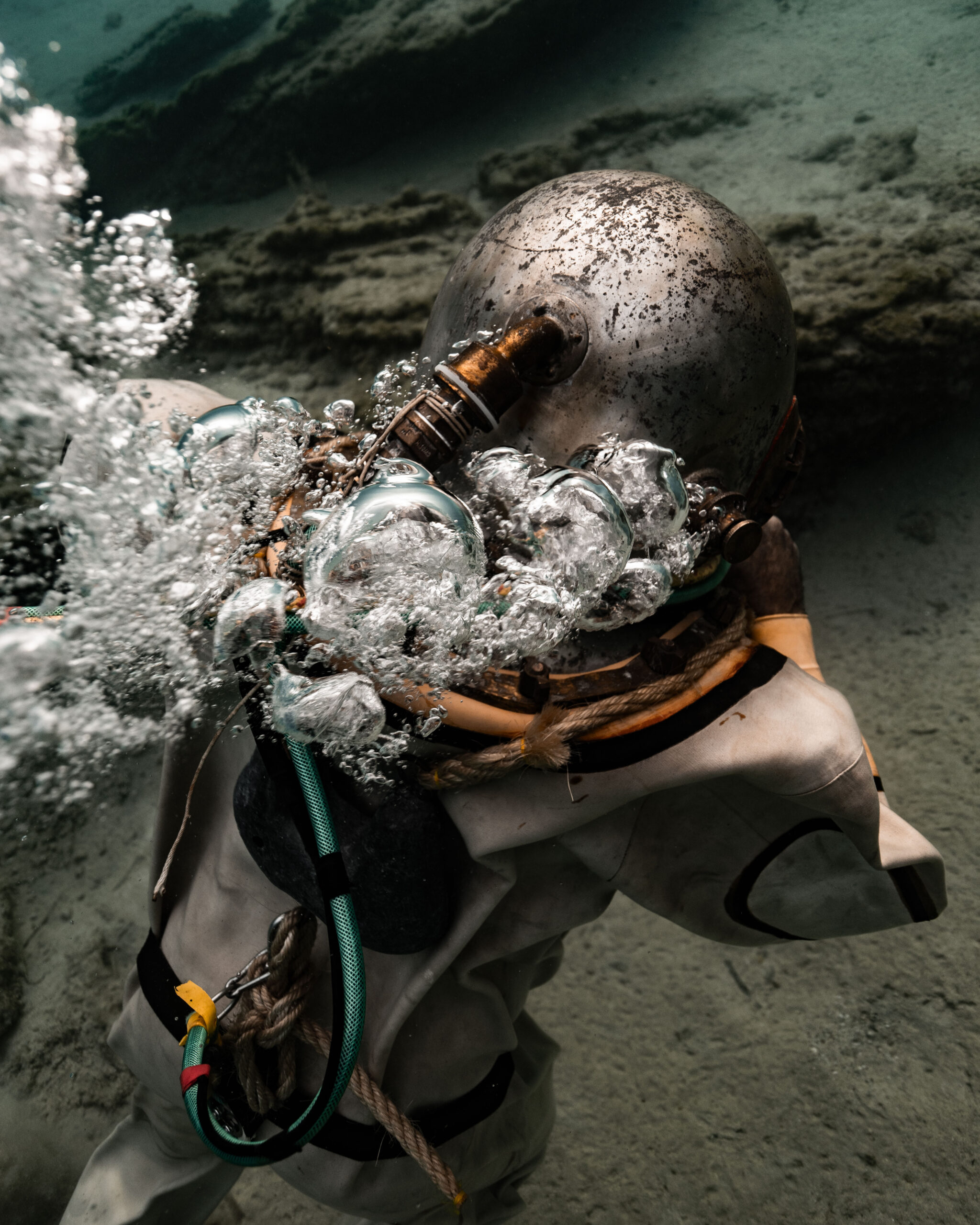
The Museum
In the heart of Pothia, Kalymnos’ picturesque harbor, housed in the former Vouvalis Maritime School, the Kalymnos Maritime Museum has since 1994, proudly preserved the island’s rich maritime heritage. The museum hosts an impressive collection of tools and devices used in sponge diving over the centuries. From the primitive diving stones of naked divers to the striking helmets with their copper headdresses, each exhibit tells a unique story.
The sponge collection is equally impressive, with some specimens standing out for their size. Additionally, rich photographic material and ship models complete the picture of the island’s maritime history. Despite limited resources and space, the museum manages to keep Kalymnos’s history alive. The unwavering support of local residents, who donate items and heirlooms, proves the deep connection between the community and its maritime tradition.
For those wishing to explore this unique piece of Greek maritime history, the Kalymnos Maritime Museum is open to visitors, usually by appointment. For more information, you can call +30 22430 51171.
Kalymnos reminds us that the sea, despite technological advances, always demands respect and caution. It is a place where the past, present, and future of diving coexist, offering a unique experience to those who dare to explore the secrets of its depths.
All photos by Kostis Aggelopoulos



